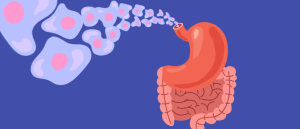Stem cell seeding technology for regenerative bladder repair

Researchers have concluded a successful two-year trial that tested a novel stem-cell seeded scaffold for regenerative bladder augmentation in baboons. The treatment showed a more desirable clinical profile than the current standard of care.
The Sharma Research Group at Stanley Manne Children’s Research Institute at Ann & Robert H. Lurie Children’s Hospital of Chicago and Northwestern University (both IL, USA) have recently concluded a two-year trial that tested a stem cell-seeded biomaterial as a means of bladder tissue repair in baboon subjects. The researchers hope this will eventually be translated to humans to improve the current standard of care for patients requiring bladder augmentation surgery.
Patients with severe bladder dysfunction may ultimately require surgical intervention to maintain bladder capacity and function. The current standard treatment involves using segments of individuals’ own gastrointestinal tissue to augment the damaged bladder. However, this procedure confers a range of long- and short-term complications including tissue-specific rejection, arising from the physiological disparities between the two tissue types.
In an attempt to improve the compatibility of grafted tissue with the existing bladder tissue, the Sharma Research Group created a new regenerative model using individuals’ stem cells. They seeded a citrate-based biomaterial scaffold with autologous bone marrow-derived CD34+ hematopoietic stem/progenitor cells and mesenchymal stem cells – both of which have proven in vivo bladder regenerative capacities.
The prepared donor-matched scaffolds were used to augment significantly damaged bladder tissue in baboon subjects. The animals’ bladder tissue regeneration, function and clinical profile were monitored regularly over a two-year period alongside a control group who had received an autologous graft of intestinal tissue.
Over the two years, the treatment groups evolved distinct clinical profiles. While the control group did demonstrate recovered bladder function, they were also plagued by a number of clinical complications. These included bladder deformity and kidney swelling. The group receiving the novel stem-cell scaffold graft demonstrated better clinical outcomes, with a continued upward trend in recovery seen from 6 months until the end of the study. The group also did not experience the clinical issues seen in the control group.
“Our results were fantastic and point to a new direction in the field. The likelihood that our innovative platform will be feasible in humans is very high and we anticipate launching a clinical trial soon,” enthused lead researcher Arun Sharma. “In our study, the bladder started working within a few months and demonstrated functionality throughout the study. This is a major advance that will transform clinical practice.”
This promising study indicates that regenerative grafts using autologous stem cell-seeded scaffolds could be a viable approach for repairing severely dysfunctional human bladders while circumventing the concerns with tissue rejection associated with intestinal tissue grafts.
You may also like:
 Are bone marrow-derived mesenchymal stem cells the key to treating Crohn’s disease?
Are bone marrow-derived mesenchymal stem cells the key to treating Crohn’s disease?
Researchers have demonstrated that human mesenchymal stem cells can promote healing and tissue regeneration in a mouse model of Crohn’s disease.